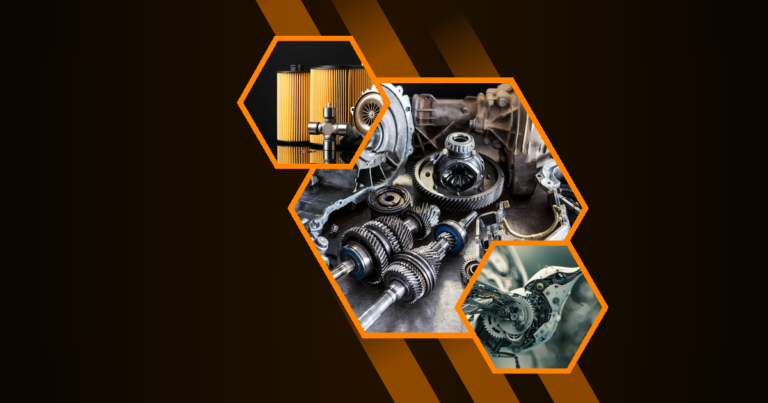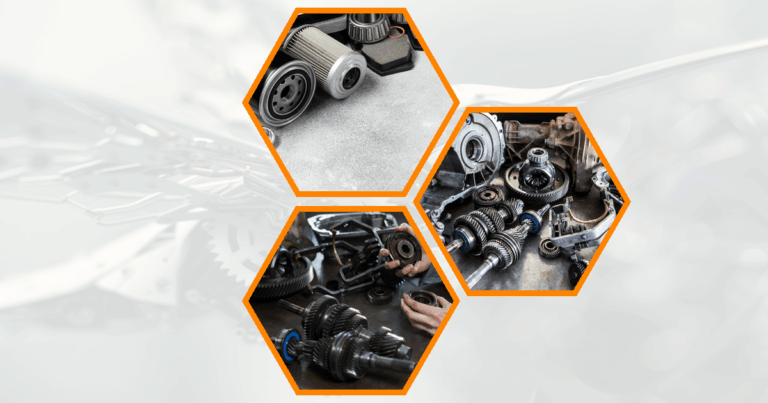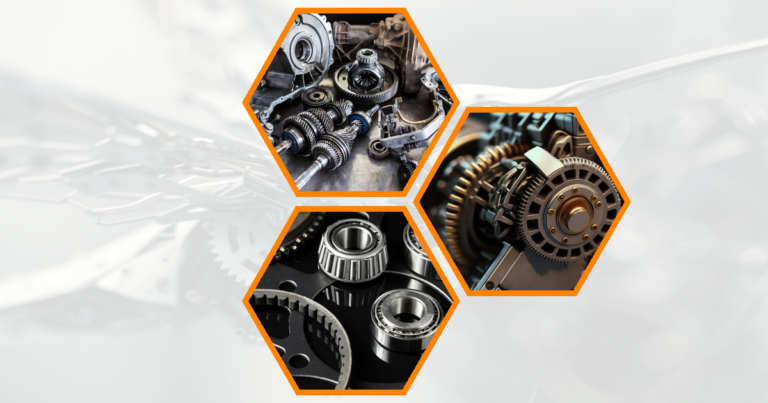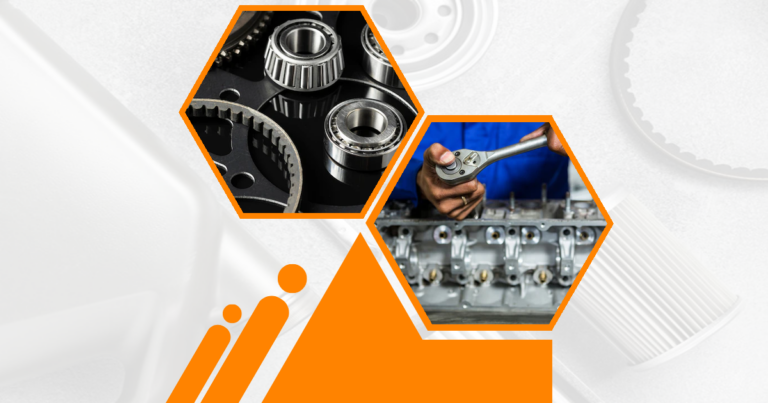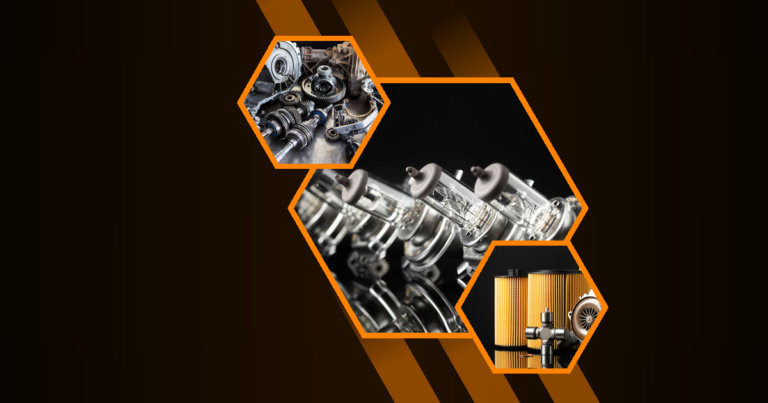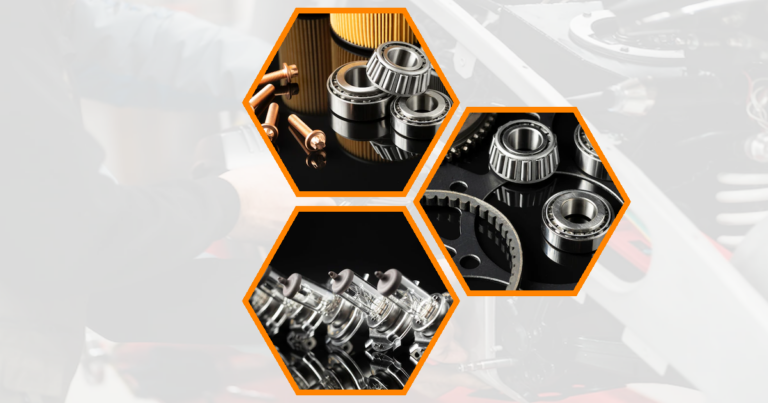What is a Gear
Gears are rotating circular machine parts with teeth that mesh with other gears to transmit power or motion. These essential components of mechanical systems are designed to work together, creating a gear train that can change the speed, torque, and direction of a power source.
Rotating Circular Machine Part
Gears are typically circular in shape, with teeth around their circumference. These teeth interlock with other gears, allowing for smooth and efficient power transmission. The circular design enables continuous rotation and consistent engagement between gears.
Cog Mechanisms
Cogs, often used interchangeably with gears, refer to the individual teeth on a gear. These cogs are precisely engineered to mesh with the teeth of other gears, ensuring proper engagement and power transfer.
Shaft Positions and Configurations
Gears can be arranged in various shaft positions and configurations to achieve different mechanical outcomes. Common arrangements include:
- Parallel shafts
- Intersecting shafts
- Non-parallel, non-intersecting shafts
Shaft Configuration | Description | Common Applications |
Parallel | Gears rotate on parallel axes | Transmissions, conveyor systems |
Intersecting | Gear axes intersect at an angle | Differential gears, bevel gear systems |
Non-parallel, non-intersecting | Gear axes neither parallel nor intersecting | Worm gear drives, hypoid gears |
Why Use Gears
Gears play a crucial role in many mechanical systems, offering several advantages that make them indispensable in various applications.
Power Transmission
Gears efficiently transmit power from one rotating shaft to another. This ability to transfer motion and force is fundamental in countless machines and devices, from simple hand-operated tools to complex industrial equipment.
Speed and Torque Modification
One of the primary reasons for using gears is their ability to modify speed and torque. By combining gears of different sizes, engineers can create systems that:
- Increase or decrease rotational speed
- Amplify or reduce torque
- Change the direction of rotation
Mechanical Advantage
Gears provide mechanical advantage, allowing smaller input forces to generate larger output forces. This principle is widely used in various applications, including:
- Automotive transmissions
- Industrial machinery
- Precision instruments
- Mechanical advantage = (Number of teeth on driven gear) / (Number of teeth on driving gear)
- Speed ratio = (Number of teeth on driven gear) / (Number of teeth on driving gear)
- Torque ratio = (Number of teeth on driving gear) / (Number of teeth on driven gear)
Parts of a Gear
Understanding the various parts of a gear is essential for proper design, selection, and maintenance of gear systems.
Axis
The axis is the central line around which the gear rotates. It’s typically where the gear is mounted on a shaft or spindle.
Teeth
Gear teeth are the protruding elements that mesh with other gears. The shape and size of teeth are critical for proper gear function and efficiency.
Pitch Circle
The pitch circle is an imaginary circle that represents the theoretical rolling surface of the gear. It’s used as a reference for calculating gear dimensions and ratios.
Pitch Diameter
The pitch diameter is the diameter of the pitch circle. It’s a crucial measurement used in gear design and selection.
Diametral Pitch
Diametral pitch is a measure of the size of the teeth relative to the pitch diameter. It’s calculated as the number of teeth per inch of pitch diameter.
Circular Pitch
Circular pitch is the distance along the pitch circle from one tooth to the next. It’s used in gear design and manufacturing.
Module
The module is a metric measurement of tooth size, calculated as the pitch diameter divided by the number of teeth.
Pressure Angle
The pressure angle is the angle between the tooth face and a line perpendicular to the pitch circle. It affects the strength and smoothness of gear operation.
Gear Part | Function | Importance |
Axis | Center of rotation | Determines gear alignment |
Teeth | Engage with other gears | Transfer power and motion |
Pitch Circle | Theoretical rolling surface | Reference for gear calculations |
Pitch Diameter | Diameter of pitch circle | Key dimension for gear sizing |
Diametral Pitch | Tooth size relative to pitch diameter | Used in gear design and selection |
Circular Pitch | Distance between teeth on pitch circle | Important for gear manufacturing |
Module | Metric measure of tooth size | Used in metric gear systems |
Pressure Angle | Angle of tooth face | Affects gear strength and smoothness |
Types of Gears
There are various types of gears, each designed for specific applications and operating conditions.
Spur Gear
Spur gears are the simplest and most common type of gear. They have straight teeth parallel to the axis of rotation and are used for parallel shaft applications.
Helical Gear
Helical gears have teeth cut at an angle to the face of the gear. This design allows for smoother and quieter operation compared to spur gears.
Gear Rack
A gear rack is a straight bar with gear teeth, designed to mesh with a pinion gear. It converts rotary motion to linear motion or vice versa.
Bevel Gear
Bevel gears have conical pitch surfaces and are used to transmit motion between intersecting shafts, typically at right angles.
Spiral Bevel Gear
Spiral bevel gears are similar to regular bevel gears but have curved teeth. They offer smoother operation and can handle higher loads.
Screw Gear
Screw gears, also known as worm gears, consist of a worm (screw) that meshes with a worm wheel. They’re used for high reduction ratios and non-reversible drives.
Double Helical Gear
Double helical gears, also called herringbone gears, have two sets of teeth angled in opposite directions. This design eliminates axial thrust and allows for smoother operation.
Herringbone Gear
Herringbone gears are essentially double helical gears with no gap between the two helical sections. They offer excellent load capacity and smooth operation.
Hypoid Gear
Hypoid gears are similar to spiral bevel gears but with offset axes. They’re commonly used in automotive differentials.
Miter Gear
Miter gears are a type of bevel gear with a 1:1 ratio, used to change the direction of rotation between two shafts at right angles.
Worm Gear
Worm gears consist of a worm (screw) and a worm wheel. They’re used for high reduction ratios and can be self-locking.
Internal Gear
Internal gears have teeth on the inside of a ring, meshing with a pinion gear. They’re used in planetary gear systems and some types of transmissions.
- Spur Gears: Simple, cost-effective, suitable for parallel shafts
- Helical Gears: Smoother operation, higher load capacity than spur gears
- Bevel Gears: Used for intersecting shafts, common in differentials
- Worm Gears: High reduction ratios, self-locking capability
- Internal Gears: Compact design, used in planetary systems
Advantages and Disadvantages of Gears
Gears offer numerous benefits but also have some limitations that should be considered in mechanical design.
Benefits of Gear Systems
Gears provide several advantages in mechanical systems:
- Efficient power transmission
- Ability to change speed and torque
- Precise motion control
- Compact design for high power density
- Long service life with proper maintenance
Limitations and Drawbacks
Despite their benefits, gears also have some disadvantages:
- Noise and vibration, especially at high speeds
- Require lubrication and maintenance
- Can be expensive to manufacture, especially for complex designs
- Potential for wear and failure under high loads or improper use
- Limited flexibility compared to some other power transmission methods
Advantages | Disadvantages |
Efficient power transmission | Noise and vibration |
Speed and torque modification | Maintenance requirements |
Precise motion control | Manufacturing costs |
Compact design | Potential for wear and failure |
Long service life | Limited flexibility |
Gear Ratios and Calculations
Understanding gear ratios is crucial for designing and analyzing gear systems.
Understanding Gear Ratios
Gear ratio is the relationship between the number of teeth on two meshing gears. It determines the speed and torque changes in a gear system.
Calculating Mechanical Advantage
Mechanical advantage in gear systems is directly related to the gear ratio. It allows a small input force to produce a larger output force.
- Gear Ratio = (Number of teeth on driven gear) / (Number of teeth on driving gear)
- Speed Ratio = (Angular velocity of driving gear) / (Angular velocity of driven gear)
- Torque Ratio = (Torque of driven gear) / (Torque of driving gear)
Applications of Gears in Industry
Gears are used extensively across various industries due to their versatility and efficiency.
Automotive Transmissions
In automobiles, gears are crucial components of transmissions, allowing engines to operate efficiently across a range of speeds.
Manufacturing Equipment
Industrial machinery often relies on gears for precise control and power transmission in various manufacturing processes.
Robotics and Automation
Gears play a vital role in robotics, providing the necessary motion control and force multiplication for robotic arms and automated systems.
- Automotive: Transmissions, differentials, steering systems
- Manufacturing: Machine tools, conveyor systems, packaging machinery
- Robotics: Joint actuators, precision positioning systems
- Aerospace: Aircraft engines, flight control systems
- Marine: Propulsion systems, winches, steering mechanisms
Gear Materials and Manufacturing
The choice of materials and manufacturing methods significantly impacts gear performance and durability.
Common Gear Materials
Gears can be made from various materials, depending on the application requirements:
- Steel: High strength and durability
- Brass: Good machinability and corrosion resistance
- Plastic: Lightweight and low-cost for low-load applications
- Cast iron: Good wear resistance and damping properties
Gear Production Methods
Several manufacturing techniques are used to produce gears:
- Machining: Cutting, grinding, and shaping
- Casting: For large gears or complex shapes
- Powder metallurgy: For high-volume production of small gears
- 3D printing: For prototyping and custom gears
Material | Advantages | Common Applications |
Steel | High strength, durability | Heavy-duty industrial gears |
Brass | Corrosion resistance, machinability | Marine applications, clocks |
Plastic | Lightweight, low-cost | Consumer products, low-load applications |
Cast iron | Wear resistance, damping properties | Large industrial gears |
Gear Maintenance and Lubrication
Proper maintenance and lubrication are essential for ensuring the longevity and efficiency of gear systems.
Proper Gear Care
Regular inspection and maintenance of gears can prevent premature wear and failure. Key aspects of gear care include:
- Regular cleaning to remove debris
- Checking for signs of wear or damage
- Proper alignment and adjustment
- Timely replacement of worn components
Lubrication Techniques
Effective lubrication is crucial for reducing friction and wear in gear systems. Common lubrication methods include:
- Oil bath lubrication
- Splash lubrication
- Force-feed lubrication
- Grease lubrication for slow-speed applications
- Inspect gears regularly for signs of wear or damage
- Maintain proper alignment and backlash
- Use appropriate lubricants for the specific gear type and operating conditions
- Follow manufacturer’s recommendations for lubrication intervals and methods
- Monitor operating temperatures and vibration levels for early problem detection
Advanced Gear Technologies
As technology progresses, new advancements in gear design and manufacturing are emerging.
Precision Gearing
Precision gears are manufactured to extremely tight tolerances, offering improved performance and efficiency. Applications include:
- Aerospace systems
- Precision instruments
- High-performance racing transmissions
Smart Gear Systems
Smart gear systems incorporate sensors and advanced materials to improve performance and reliability:
- Self-monitoring gears with embedded sensors
- Adaptive lubrication systems
- Shape memory alloy gears for temperature-sensitive applications
- Nano-surface treatments for improved wear resistance
- Composite materials for lightweight, high-strength gears
- Additive manufacturing for complex gear geometries
- Integration of smart materials for self-adjusting gears
- Advanced simulation and modeling for optimized gear design
Gear Efficiency and Power Loss
Maximizing gear efficiency is crucial for reducing energy consumption and improving overall system performance.
Factors Affecting Gear Efficiency
Several factors influence the efficiency of gear systems:
- Gear geometry and tooth profile
- Material properties and surface finish
- Lubrication quality and method
- Operating conditions (speed, load, temperature)
Minimizing Power Loss in Gear Trains
Strategies to reduce power loss in gear systems include:
- Optimizing gear design for specific applications
- Using high-efficiency lubricants
- Implementing proper alignment and maintenance procedures
- Selecting appropriate materials for operating conditions
Factor | Impact on Efficiency | Mitigation Strategy |
Tooth profile | Affects sliding and rolling friction | Optimize profile design |
Lubrication | Reduces friction and wear | Use appropriate lubricants |
Alignment | Misalignment increases power loss | Ensure proper installation and maintenance |
Surface finish | Rougher surfaces increase friction | Improve manufacturing precision |
Gear Noise and Vibration
Controlling gear noise and vibration is essential for many applications, particularly in consumer products and precision machinery.
Causes of Gear Noise
Common sources of gear noise include:
- Tooth mesh impacts
- Gear misalignment
- Manufacturing imperfections
- Inadequate lubrication
Vibration Reduction Techniques
Methods to reduce gear vibration and noise: Transmission system components Vehicle acoustic suppressor
Automotive heat management helps keep car engines cool It uses special parts to move hot air away from important engine pieces Crankshaft camshaft differentiation A crankshaft turns the up-and-down motion of pistons into spinning motion while a camshaft controls the opening and closing of engine valves
Automotive camshaft mechanism The Suspension damping components help control how your car bounces and moves over bumps They make your ride smoother and more comfortable by absorbing shocks from the road
Automotive oil varieties Different types of oil for cars and trucks help keep engines running smoothly Some automotive oil varieties are made for specific vehicles or driving conditions Disc brake pads are special parts that help stop your bike or car by pressing against a spinning metal disc when you use the brakes
- Optimizing tooth profile and gear geometry
- Improving manufacturing precision
- Using noise-damping materials
- Implementing proper lubrication and maintenance
- Use helical or herringbone gears for quieter operation
- Implement proper gear backlash to reduce impact noise
- Apply vibration-damping coatings or treatments
- Ensure proper gear alignment and mounting
- Consider using plastic gears for noise-sensitive applications
Gear Failure Analysis
Understanding common gear failure modes is crucial for preventing breakdowns and improving gear system reliability.
Common Gear Failure Modes
Typical gear failure mechanisms include:
- Tooth wear
- Pitting and spalling
- Tooth bending fatigue
- Scuffing and scoring
- Tooth breakage
Preventive Measures
Strategies to prevent gear failure:
- Proper gear selection and sizing for the application
- Implementing effective lubrication systems
- Regular inspection and maintenance
- Monitoring operating conditions (load, speed, temperature)
Failure Mode | Causes | Prevention Strategies |
Tooth wear | Inadequate lubrication, contamination | Proper lubrication, filtration |
Pitting | Surface fatigue, overloading | Correct gear sizing, load distribution |
Tooth bending fatigue | Cyclic loading, stress concentrations | Optimized tooth design, material selection |
Scuffing | High sliding velocities, inadequate lubrication | Improved surface finish, appropriate lubricants |
Tooth breakage | Overloading, impact loads | Proper gear sizing, shock-absorbing couplings |
Gear Standards and Specifications
Adherence to industry standards ensures consistency, interchangeability, and quality in gear manufacturing and application.
Industry Standards for Gears
Common gear standards include:
- AGMA (American Gear Manufacturers Association) standards
- ISO (International Organization for Standardization) gear standards
- DIN (Deutsches Institut für Normung) gear standards
Quality Control in Gear Manufacturing
Quality control measures in gear production:
- Dimensional inspection using precision measuring equipment
- Gear tooth profile and lead checks
- Material testing and heat treatment verification
- Functional testing and noise analysis
- AGMA 2000-A88: Gear Classification and Inspection Handbook
- ISO 1328: Cylindrical Gears – ISO System of Accuracy
- DIN 3961: Tolerances for Cylindrical Gear Teeth
- AGMA 2015-1-A01: Accuracy Classification System

